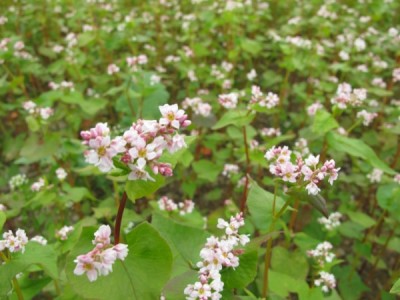BUCKWHEAT
Fagopyrum esculentum
Buckwheat is an annual plant of the polygonaceae family, pollinated by insects. Buckwheat has low moisture requirements, and an ability to absorb nutrients which are unavailable to other species. It is suitable for weaker, even sandy soils which are otherwise used for rye or lupins. Buckwheat is characterized by a very dynamic growth of biomass. When grown as stubble intercrop, it can yield a good crop of green fodder after as little as 7-8 weeks. What is more, it does not require intensive mineral fertilizing, since it makes very good use of nutrients present in the soil. Buckwheat has phytosanitary properties and it leaves a good stand for other plants, especially cereals; it limits the presence of certain nematodes in the soil.
Buckwheat is a melliferous plant. With an adequate population of bees , buckwheat can yield 40-100kg of very valuable honey out of 1 ha. What is important, Buckwheat is qualified as “safe food”- buckwheat groats and flour do not contain gluten, making a very valuable component of specialty foodstuffs for children or people suffering from metabolic disorders.







